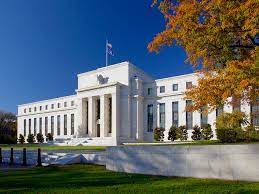Wealth Strategies
US Fed Holds Rates Unchanged: Wealth Sector Reacts

After the US Federal Open Market Committee (FOMC) voted unanimously to keep interest rates unchanged, investment managers discuss the impact.
The S&P 500 closed at a new high for the year and the yield on 10-year US Treasuries dropped sharply to close to 4 per cent yesterday after the Federal Reserve laid the groundwork for rate cuts in 2024.
The Federal Open Market Committee (FOMC) voted unanimously to keep rates unchanged in a 5.25 per cent to 5.5 per cent target range and to continue to significantly reduce its securities holdings. This decision was widely expected and marked the third consecutive time the Fed paused since starting its 525 bps hike cycle in March 2022.
The Fed’s new economic projections pointed to a median of 75 bps of rate cuts next year, more than the 50 bps anticipated going into the meeting. The more dovish tone and comments from Fed Chair Jay Powell supported the view that the hiking cycle is "at or near peak" since it is "not likely" that the committee will hike rates again.
By the US equity market close, the S&P 500 had gained 1.4 per cent to 4,707 and the US 10-year Treasury yield fell 17 bps to 4.02 per cent.
Here are some reactions from wealth managers to the decision.
Mark Haefele, CIO, UBS Global Wealth
Management
“US bonds and equities rallied in tandem after the Fed signaled
the end of the rate hiking cycle and pointed to a
faster-than-expected pace of rate cuts in 2024. Overall, we
continue to recommend seeking quality in both bond and equities.
Bonds remain our preferred asset class and the Fed’s actions
support our view that the bond market has further to rally in
2024. We forecast 10-year US Treasury yields to end 2024 at 3.5
per cent. We remain most preferred on high-quality bonds –
specifically high grade (government) and investment grade,
particularly in the five-year segment.”
“Within equities, we continue to recommend a bias toward quality – companies with strong returns on invested capital, resilient operating margins, and relatively low debt on their balance sheets.”
Daniele Antonucci, CIO at Quintet Private Bank (parent of
Brown Shipley)
“The decision to keep the key Fed policy rate at current levels
isn’t the interesting bit. That was unanimously expected. The key
point is that the central bank is now hinting at greater scope
for rate cuts next year and is using a softer language on
inflation. After all, while the battle on inflation isn’t fully
won, the deceleration is noticeable and we think likely to
continue.
“The US economy has been growing strongly in the third quarter of this year, but this is now changing with high interest rates feeding through.The labor market is still solid, but signs of more moderate job creation are emerging. With supply chains also working better, inflation has fallen over the past year. Even though it’s unlikely that the Fed will fully reach its 2 per cent inflation target next year, this policy decision confirms that the central bank is at peak rates.
“To keep downward pressure on inflation, we believe it will keep rates elevated over the coming months before cutting from mid-2024 to support growth. This removes the major headwind for equity markets we’ve seen since 2022. As a result, we’ve slightly moderated our preference for bonds over equities. Of course, we cannot ignore some risks of a deeper recession materializing alongside a more fragmented world and ongoing geopolitical risks. Given these lingering concerns, we think high-quality bonds remain attractive due to compelling valuations and an ability to protect against recessionary risks.”
Lombard Odier, senior macro strategist,
Bill Papadakis
“Fed Chair Jerome Powell went beyond simply acknowledging the
progress achieved so far in his remarks, as he also sounded
optimistic about the path forward. Most importantly, he did not
attempt to push back against current market expectations for
substantial rate cuts next year. We see that as a powerful signal
that the Fed will be ready to switch to rate cuts sooner than we
previously expected. Along with the encouraging data out of this
week’s Consumer Price Index and Producer Price Index releases,
these developments have made us revise our expectations for the
Fed’s policy path in 2024. We now expect four 25 basis point rate
cuts, up from two previously.”
Christian Scherrmann, US economist at
DWS
“Overall, the meeting was a bit more dovish than we expected. It
seems that central bankers are comfortable with what they are
seeing on the inflation front. However, we would like to remind
that they are not yet on autopilot to the runway and that the
timing of the first rate cuts still depends on the evolution of
the incoming data and, in particular, of inflation. There are
risks that we could see some disappointment on this looking
ahead. After all, the Fed told us at the last meeting in 2023
that rates are probably high enough, but not how long they need
to stay there. The "longer" in "higher for longer" will now be
the subject of a broader discussion in the coming months.”
Paul McSheaffrey, senior banking partner, Hong Kong, KPMG
China
“No raise in the Fed rates at this meeting perhaps indicates that
we may have reached the top of the interest rate cycle. However,
I don't think this should be taken as a sign that rates will fall
in the short term – the US Fed will want to ensure they really
have got inflation under control before reducing rates.”